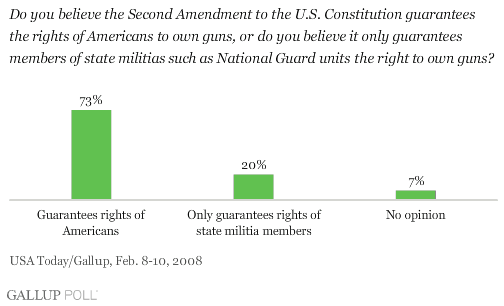After my post on why it was inappropriate for Justice Stevens, a sitting Supreme Court Justice, to propose constitutional amendments, a few people reminded me to comments Justice Scalia made in New York Magazine last fall, indicating that he would amend the Article V amendment process.
Do you think there are flaws in the Constitution?
The one provision that I would amend is the amendment provision. And that was not originally a flaw. But the country has changed so much. With the divergence in size between California and Rhode Island—I figured it out once, I think if you picked the smallest number necessary for a majority in the least populous states, something like less than 2 percent of the population can prevent a constitutional amendment. But other than that, some things have not worked out the way the framers anticipated. But that’s been the fault of the courts, not the fault of the draftsmen.
During a recent event at the National Press Club, Justices Scalia addressed a similar question, and spoke about the amendment process. Scalia gave an almost-identical answer (if you’ve seen the Justices on the Circuit, you will start to get bored to hear the *same exact answers and stories* over and over again):
In a televised conversation at the National Press Club on Thursday, Justices Antonin Scalia and Ruth Bader Ginsburg were asked what amendment they would make to the Constitution if given the opportunity. Scalia said he would amend the amendment provision to make amendments easier. Ginsburg said she would add the equal rights amendment.
“I certainly would not want a constitutional convention,” Scalia told moderator Marvin Kalb. “Whoa! Who knows what would come out of it?” But, he explained, he once calculated what percentage of the population could prevent an amendment to the Constitution and found it was less than 2 percent. “It ought to be hard, but not that hard,” Scalia said.
Does this rub me the wrong way like Stevens’s proposal. Somewhat, but not as much. First, he isn’t highlighting and focusing on a specific case that didn’t come out his way, as is this case for all 6 of Stevens’s amendments. Second, he is speaking towards a broader structural element of how our Constitution could be changed by the political process (read, not by Judges). Here, he and Stevens are on the same page.
Third, he isn’t focusing on any particular part of the Constitution that needs changing. I haven’t see Scalia say he would amend any specific substantive provision of the Constitution, or use an Amendment to change a case he doesn’t agree with (If anyone finds that, please send it to me and I’ll update this post). He has certainly said the Court has intrpreted provisions of the Constitution incorrectly (due process) but I don’t think he has suggested the charter itself be changed. In fact, he routinely cites the Flag Burning case of Texas v. Johnson as an example where he really doesn’t agree with his own opinion, but that is what the First Amendment, as an originalist matter compels.
Justice Ginsburg focused on the Equal Rights Amendment, which was never ratified:
The failure of the push to add the equal rights amendment, Ginsburg noted, was an example of how difficult the amending process is. That amendment, she added, “means that women are people of equal stature before the law. I think we have achieved that through legislation but legislation can be repealed, altered. But that principle belongs in our Constitution. It is in every constitution written since the second world war.”
I would disagree with Justice Ginsburg. This change hasn’t been achieved only through legislation, such as Title VII, or FMLA, or Title IX. Instead, it was achieved through the evolution in the Court’s Equal Protection jurisprudence concerning gender discrimination. Cases stretching from Frontiero to Craig v. Boren (which RBG herself argued) to VMI (which RBG wrote) effectively amended the Constitution in much the same way as the ERA did. So is it really necessary to have a formal amendment?
And this conclusion illuminates one of the main difficulties I have with Justice Stevens’s book. Stevens isn’t actually calling for 1, let alone 6 Amendments to the Constitution. He is openly advocating for one vote on the Court to flip to switch the 5-4 in Heller the other way around. He is merely using the Amendment process as a convenient forum to rehabilitate his dissents in the hope that one day they will become majority opinions.
If popular sentiments are any indication, an amendment to the Constitution to strengthen, not weak gun rights, would have a higher likelihood of success today. The overwhelming majority of Americans (73%) agree with Heller. That’s almost enough for a super-majority to amend the Constitution.
I discuss many other trends towards popular support for laxer gun laws, even following mass shootings, in this article.
Perhaps Justice Stevens should be relieved that it is not easier to amend the Constitution. It likely would not turn out in his favor, and his Heller dissent would remain just that.
